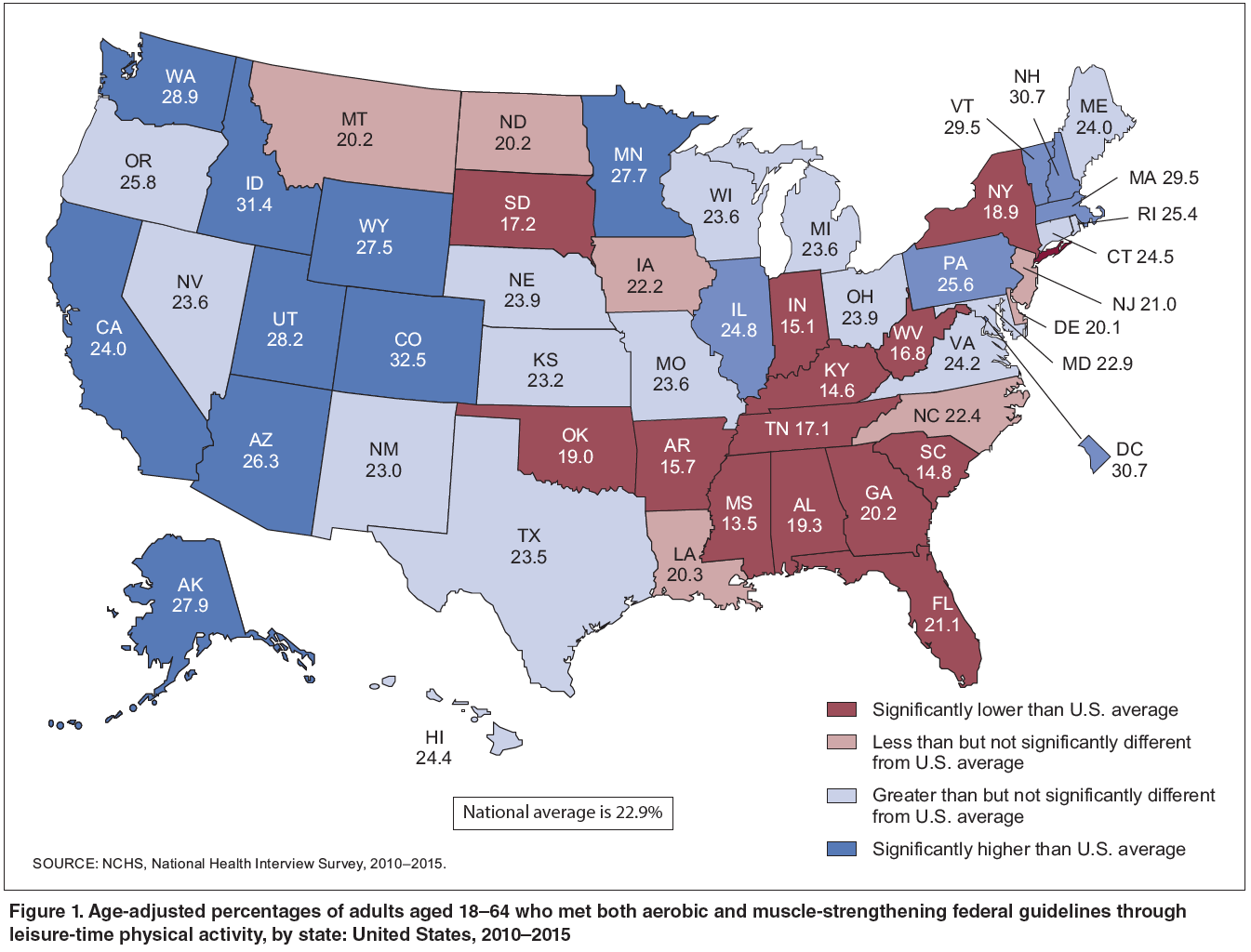A new report from the Centers for Disease Control and Prevention (CDC) finds that only about 23% of US adults meet federal recommendations for aerobic and muscle-strengthening activity. This means that more than 3 out of 4 adults are missing out on profound health benefits from activity and putting themselves at increased risk for cancer, type 2 diabetes and heart disease.
AICR’s Third Expert Report found that getting enough physical activity lowers risk for colon, breast and endometrial cancers. Doctors and other health professionals say that “exercise is medicine” and many are even giving physical activity prescriptions to their patients to encourage them to take that advice seriously.
The CDC report looked at how many adults in every state meet the guidelines to achieve 150 minutes weekly of moderate activity and at least 2 days per week of muscle-strengthening activities. Nationally, the data shows that 22.9% meet the goals, but individual states vary from as few as 14.6% adults meeting guidelines to a high of 32.5%.

State and community policy makers can use this information to understand how they might best work to improve their citizens’ physical activity, a key indicator of health. For example, leaders can develop and implement policies to create and support local infrastructure that encourages physical activity in their state. For example, when towns and cities have sidewalks and green spaces, it is easier for people to incorporate activity in their lives and, in turn, improves the residents’ health and quality of life. In rural areas, creating bike paths, trails and access to community recreation centers can boost those citizens’ activity.
While a more physically demanding occupation can contribute to more activity, the researchers said that regardless of occupation, those who do leisure-time physical activity report better health than those who do not.
In this study, researchers used data from the National Health Interview Survey (NHIS) that gathered information from over 155,000 US adults aged 18-64 from 2010 to 2015. These adults had answered questions about basic health information, including physical activity at in-person interviews. For this analysis, researchers looked only at leisure-time physical activity (LTPA) and not at activity they did at work. While a more physically demanding occupation can contribute to more activity, the researchers said that regardless of occupation, those who do leisure-time physical activity report better health than those who do not.
The report also found that nationally, men were more likely to meet guidelines (27.2%) than women (18.2%). In general the southeastern region of the US has lower levels of physical activity than the western states with the northeast and upper midwest mixed.
How is your state doing compared to others? Do you have a place to walk, bike or otherwise be active?
Getting enough physical activity can be challenging, but AICR has some resources to help you get started and stick with it. Here are some tools for you to assess where you are now and to find ways to begin moving more:
Cancer Health Check – our new interactive tool to help you reduce your cancer risk
New American Plate Challenge – AICR’s tried and true program to help you reach your health goals and lower your risk of cancer
Physical Activity and Cancer Risk – resources and ideas to move more!





